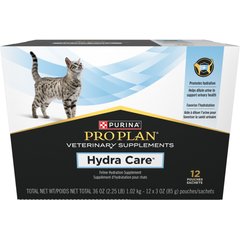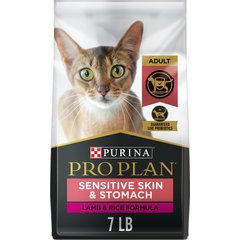Cirrhosis and Fibrosis of the Liver in Cats
Put simply, cirrhosis of the liver is the generalized (diffuse) formation of scar tissue. It is associated with regenerative nodules, or masses, and deranged liver architecture. Fibrosis of the liver, on the other hand, involves the formation of scar tissue that replaces normal liver tissue. This condition can be inherited or acquired.
Symptoms and Types
- Seizures
- Blindness
- Fluid build-up in the abdomen
- Lack of energy
- Loss of appetite (anorexia)
- Poor body condition
- Vomiting
- Diarrhea
- Constipation
- Black, tarry stools due to the presence of digested blood
- Increased thirst
- Increased urination
- Yellowish discoloration of the gums and other tissues of the body
- Cats:
- Fluid build-up in the abdomen (ascites) uncommon
- Drooling (known as ptyalism)
- Possible bleeding tendencies (uncommon)
- Skin lesions with superficial, ulcerative inflammation (superficial necrolytic dermatitis)
Vet Recommended Health Support
- Feliway Optimum Enhanced Calming 30 Day Diffuser for Cats$29.99Chewy Price
- Purina Pro Plan Veterinary Diets FortiFlora Powder Probiotic Digestive Supplement for Cats, 30 count$30.99Chewy Price
- Purina Pro Plan Veterinary Diets Hydra Care Liver Flavored Liquid Supplement for Cats, 3-oz pouch, case of 12$14.99Chewy Price
- Purina Pro Plan Adult Sensitive Skin & Stomach Lamb & Rice Formula Dry Cat Food, 7-lb bag$28.08Chewy Price
Causes
- Long-term (chronic) liver injury
- Long-term (chronic) inflammatory bowel disease (IBD)
- Drug- or toxin-induced liver injury - copper-storage liver disease (copper-storage hepatopathy); medications to control seizures (known as anticonvulsants); azole medications to treat fungal infections; medication to treat intestinal parasites (oxibendazole); antibiotic (trimethoprim-sulfamethoxazole); nonsteroidal anti-inflammatory drugs (NSAIDs); long-term (chronic) food-borne toxin (aflatoxins)
- Infectious disease
- Long-term (chronic) inflammation of the bile ducts and liver (known as “cholangiohepatitis”) in cats
- Long-term (chronic) blockage of the extrahepatic or common bile duct (extrahepatic bile duct obstruction) - lasting more than six weeks
Diagnosis
Your veterinarian will perform a thorough physical exam on your cat, taking into account the background history of symptoms and possible incidents that might have precipitated this condition. A blood chemical profile, a complete blood count, an electrolyte panel and a urinalysis to rule out other causes of disease are also standard examination procedures.
A fine needle aspirate should be taken from the liver for a sample to be sent for cytologic analysis. A liver biopsy taken via laparoscope may also be necessary to form a definitive diagnosis.
Treatment
Patients with minimal signs can be treated on an outpatient basis as long as they are still eating normally. Patients with more severe signs should be hospitalized, given fluid therapy if necessary and have a feeding tube inserted if they are showing symptoms of anorexia. Electrolytes may be supplemented while administering fluids, and some patients respond well to B-complex vitamins.
If there is abdominal fluid build-up, the fluid will need to be tapped and removed, and sodium restricted in the diet until the cause of the build-up has been resolved.
Cats displaying signs of hepatic encephalopathy (ammonia buildup in the blood causing neurologic signs) will need to have food withheld, as should cats that are vomiting and/or suffering from inflammation of the pancreas. Such patients should have individualized protein portions suited to their level of hepatic dysfunction. Albumin levels should be maintained.
If surgery is being considered, a clotting profile will need to be performed. This is due to a concern that patients with longer clotting times will have an increased chance of bleeding, even during minor surgeries.
Living and Management
Your veterinarian will schedule regular check-ups with you for your cat. At these visits, blood work will be done, including monitoring of total serum bile acids. Your veterinarian will also observe your cat’s overall body condition and observe to see if fluid is building up in the abdomen. Contact your veterinarian if your cat appears to have a larger than normal abdomen, is behaving strangely, or seems to be losing weight.



